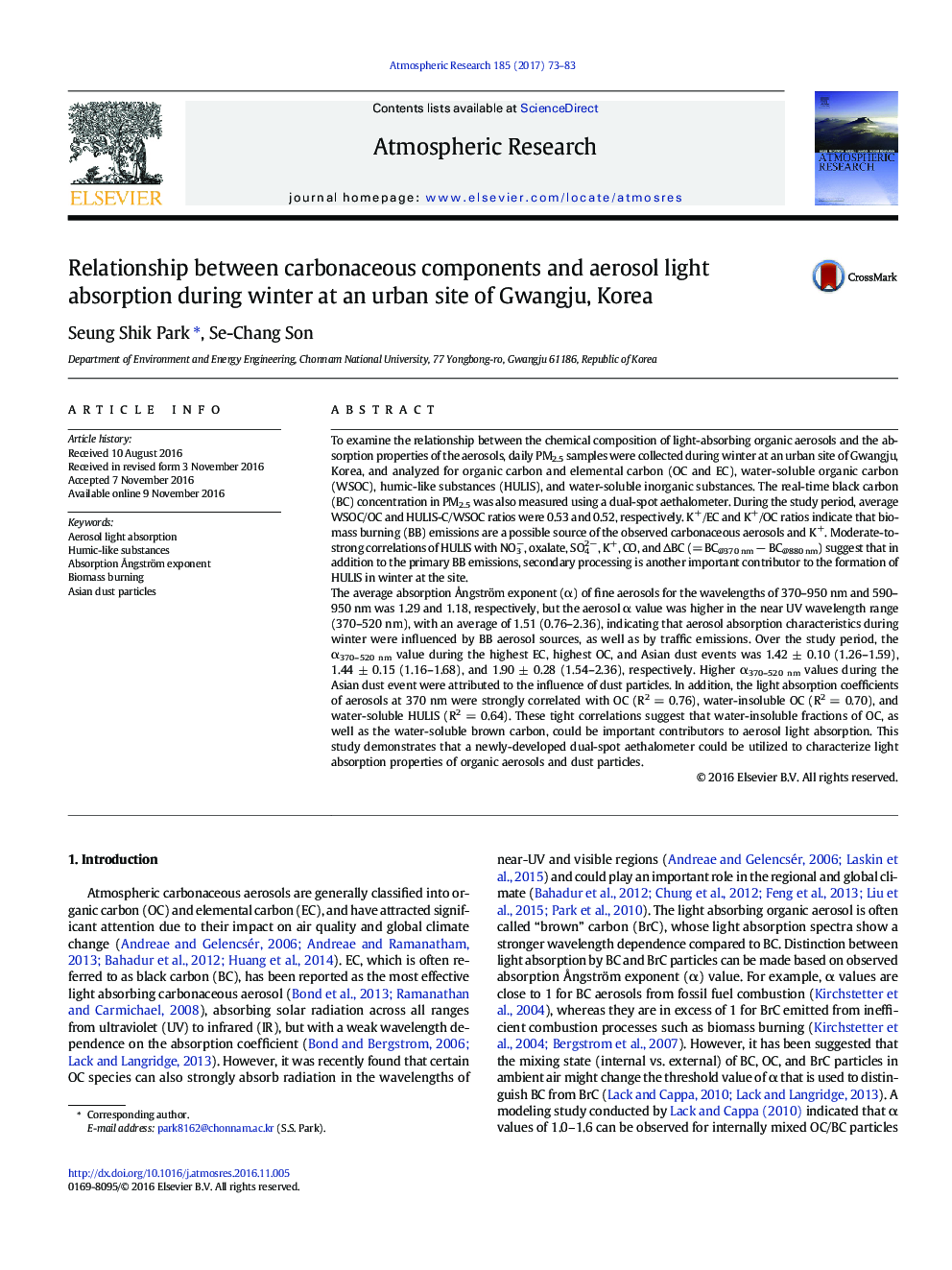| Article ID | Journal | Published Year | Pages | File Type |
|---|---|---|---|---|
| 5753695 | Atmospheric Research | 2017 | 11 Pages |
Abstract
The average absorption Ã
ngstrӧm exponent (α) of fine aerosols for the wavelengths of 370-950 nm and 590-950 nm was 1.29 and 1.18, respectively, but the aerosol α value was higher in the near UV wavelength range (370-520 nm), with an average of 1.51 (0.76-2.36), indicating that aerosol absorption characteristics during winter were influenced by BB aerosol sources, as well as by traffic emissions. Over the study period, the α370-520 nm value during the highest EC, highest OC, and Asian dust events was 1.42 ± 0.10 (1.26-1.59), 1.44 ± 0.15 (1.16-1.68), and 1.90 ± 0.28 (1.54-2.36), respectively. Higher α370-520 nm values during the Asian dust event were attributed to the influence of dust particles. In addition, the light absorption coefficients of aerosols at 370 nm were strongly correlated with OC (R2 = 0.76), water-insoluble OC (R2 = 0.70), and water-soluble HULIS (R2 = 0.64). These tight correlations suggest that water-insoluble fractions of OC, as well as the water-soluble brown carbon, could be important contributors to aerosol light absorption. This study demonstrates that a newly-developed dual-spot aethalometer could be utilized to characterize light absorption properties of organic aerosols and dust particles.
Related Topics
Physical Sciences and Engineering
Earth and Planetary Sciences
Atmospheric Science
Authors
Seung Shik Park, Se-Chang Son,
